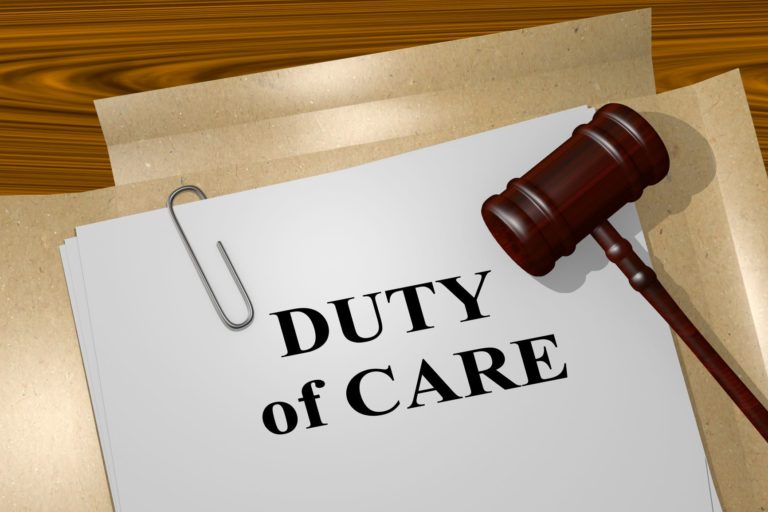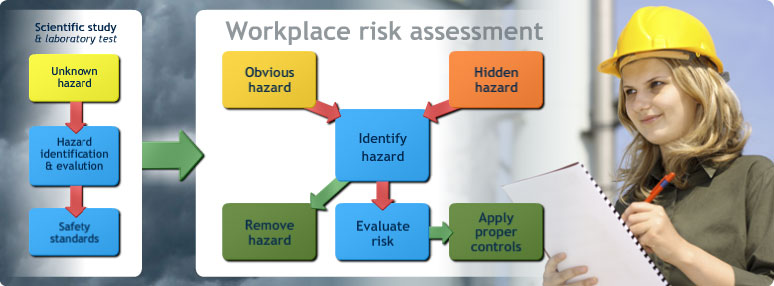Genuine human connection, emotion and responsibility are what makes up the foundation of duty of care. As humans and, more importantly, individuals, we have a responsibility to ourselves, others and the environment, which is reflected in the values displayed across generations, cultures and disciplines. The Oxford dictionary defines the duty of care as a moral or legal obligation to ensure the safety or well-being of others. The duty of care is the responsibility and/or legal commitment of individuals, companies, and leaders to take reasonable actions to ensure no harm is caused to another person or their property (Slater+Gordon Lawyers, 2021).

Duty of care is comprised of two ideals that provide contextually understanding and expectations. These are a ‘reasonable person’ and ‘reasonably practicable’. A reasonable person is a hypothetical individual who approaches any situation with the appropriate amount of caution and then sensibly acts (SPBMCC, 2020). In Australia, the reasonable person standard is used to put a situation in context and ensure that the decision-maker does not rely on their own perspective. The reasonable person is characterised as an average member of society who has various generalised attributes, including risk aversion, sound judgment and a sense of self-preservation (Scopelliti , 2018). While Reasonably practicable, in a health and safety context are defined under the Model Work Health and Safety Act, as that which is, or was at a particular time, reasonably able to be done to ensure the health and safety of others, while taking into account and weighing up all relevant matters (Safe Work Australia, 2019).
This InSight explores what the “duty of care” is, who it applies to and how it can be applied.
Whom does the duty of care apply to?
A duty of care, to varying legal degrees and moral expectations, applies to everyone. Individuals have an obligation to ensure their actions or lack of action does not result in foreseeable harm to others or their property.
In a workplace, duty of care applies to employers at all levels, including corporations, and all workers and contractors, including those who are self-employed, supervisors and managers (DMIRS, 2011). As far as practicable, employers must provide and maintain a working environment where their employees are not exposed to foreseeable risks or hazards. On the other hand, employees are expected to take reasonable care for their own safety and health at work and avoid harming the safety and health of other people through any act or omission at work (Commission for Occupational Safety and Health, 2005).

In a broader sense, Landlords also have a duty of care to their tenants, Suppliers and/or Service providers to their clients or patrons, Teachers to their students and Local Government to their resident or other people within their area of responsibility. While the general principles discussed in this InSight may apply to multiple areas or various examples given above, the focus will be on the workplaces.
Legislative Considerations
In Western Australia (WA), the duty of care is governed by several Acts. Each Act introduces duties, regulations and defences specific to either society, an industry sector or discipline. Several examples include:
- Civil Liability Act 2005, which provides protection from liability for negligence, or breaches of duties of care, to people that are acting as good samaritans;
- Occupier’s Liability Act 1985, which requires occupiers of premises to take care that is reasonable to ensure that a person will not suffer injury or damage due to dangers attributed to the state of the premises;
- Workers’ Compensation and Injury Management Act 1981, which is primarily concerned with managing situations where workers have suffered an injury at work (Sampias, 2020); and
- Public Health Act 2016, which places a legal duty on all people to conduct their activities in a way that does not cause harm to the health of others (DoH, 2016).
Specifically, to work health and safety within a WA workplace, the duty of care is regulated under the Occupational Safety and Health (OSH) Act 1984, and specific to mining or other resource operations the Mines Safety and Inspection (MSI) Act 1994, each also being supported by regulations, codes of practices and guidance notes. The duty of care provisions under these Acts is the starting point from which all other safety and health measures begin and set the scope of the duties of care to assist people at work in understanding their responsibilities. It is important to note that in November 2020, the Work Health and Safety Act 2020 was passed in WA and will replace the OSH Act and aspects of the MSI Act amongst others upon commencement. Employers will need to understand any changes to their obligations under the Act before its commencement which is planned for later in 2021.

It is also important to understand that the duty of care is also applicable through common law (law derived from the court system). Under common law, employers must take reasonable care for the safety of their employees (Commission for Occupational Safety and Health, 2005). When working to understand your own responsibilities, it is important to refer to the legislation applicable to your state or territory and industry.
Common examples and workplace practices
This section considers common duties for employers and employees under the OSH and MSI Acts. It looks at potential practices which can assist them in complying with their duty of care requirements. Information has been derived from the ‘General duty of care in Western Australian workplaces’ (Commission for Occupational Safety and Health, 2005) and ‘General duty of care in Western Australian mines’ (DMIRS, 2011) guidance documents; please refer to these documents for additional information.
General duties of employers include providing:
- Safe systems of work;
- Information, instruction, training and supervision;
- Consultation and co-operation;
- Provision of personal protection; and
- Reporting of fatalities, injuries and disease.
Employers must provide safe workplaces and work systems and ensure that work is coordinated to prevent one activity impacting or endanger a person working in another area. Consideration should be given by employers or managers to appropriately and efficiently designing workplaces and layouts, giving consideration to workflow processes and the supply of appropriate and quality equipment. Employers and managers should also ensure employees are well trained, provided with suitable instructions or procedures and informed of relevant information relating to their work or workspace. Employees should be engaged to assist with hazard identification, mitigation and protection, and consultative mechanisms which allow risk and hazards to be quickly managed should be introduced. Where it is not possible to avoid hazards, management should ensure the appropriate procedures, and protective equipment is supplied and used correctly. It is important to remember that risk assessment is an ongoing process and should consider all employees.

General duties for employees include:
- Following the employer’s safety and health instructions;
- Correctly using personal protective clothing and equipment;
- Taking good care of equipment;
- Reporting hazards;
- Reporting work-related injuries or harm to health; and
- Co-operating with employers so that employers can carry out their duties.
An employee’s duties focus on being aware of one’s environment and ensuring one’s actions or lack of action do not impact themselves or others. When working, employees should pay close attention to ensure they are following workplace procedures correctly, do not take shortcuts and be conscious of the work that is being conducted around them. Effective communication is a fundamental attribute to ensure compliance with the general duties.
Negligence
Duty of care offences are centred around negligence. Negligence is doing or failing to do something that a reasonable person would or would not do that causes foreseeable damage, injury, or loss to another person (Legal Aid Western Australia, 2018). Penalties are tiered in accordance with the seriousness of the offence, with breaches or general duties that cause serious harm or death, attracting a higher penalty. Penalties are also tiered by the role of the person who has committed the offence, as it is recognised that employees do not have the same level of control over the work or the work environment as other duty holders such as employers (Commission for Occupational Safety and Health, 2005).
As the duty of care is established within a work environment to all persons (to differing degrees), it is fundamentally important everyone understands their roles and responsibilities and carries out their tasks in a way that is safe and complies with the standards set by the business, which should reflect industry standards and codes of practice. Risk assessments should be common practice in all workplaces to ensure all foreseeable risks and hazards are identified and managed appropriately to prevent an otherwise preventable accident from occurring. Ensuring a safe work environment should not be the responsibility of one person, rather the business as a whole.

Integrate Sustainability has a wealth of knowledge and experience identifying risk and undertaking risk assessments, conducting due diligence reviews, and creating and implementing management plans and procedures. Undertaking risk assessments and implementing safety management protocols is something we do for every job and each new task we are engaged in. If you would like assistance with managing your risks or reviewing your existing system, please give Integrate Sustainability a call on 9468 0338 or email us at enquiries@integratesustainability.com.au.
References
Commission for Occupational Safety and Health. (2005). General duty of care in Western Australian workplaces. Government of Western Australia.
ditaSolutions. (2020, July 30). Practical Ways To Exercise Duty of Care in the Workplace. Retrieved from https://ditasolutions.com/dita-learning/practical-ways-to-exercise-duty-of-care-in-the-workplace/
DMIRS. (2011). General duty of care in Western Australian mines – guideline (2nd edition). Department of Mines, Industry Regulation and Safety (formerly DMP).
DoH. (2016). Public Health Act 2016. Retrieved from Department of Health: https://healthywa.wa.gov.au/Articles/N_R/Public-Health-Act-2016
EcoOnline. (2018, September 3). From Paper to Practice. Retrieved from OHS Workplace Risk Assessment: https://www.3tonline.fi/workplace-risk-assessment
Kenton, W. (2019, September 25). Duty of Care. Retrieved from Investopedia: https://www.investopedia.com/terms/d/duty-care.asp
Legal Aid Western Australia. (2018, May 21). Negligence. Retrieved from Providing legal assistance for Western Australians: https://www.legalaid.wa.gov.au/find-legal-answers/managing-your-affairs/injuries/negligence
Safe Work Australia. (2019). Model Work Health and Safety Bill. Parliamentary Counsel’s Committee.
Sampias, K. (2020, October 19). DUTY OF CARE (WA). Retrieved from Armstrong Legal: https://www.armstronglegal.com.au/commercial-law/wa/tort-law/duty-of-care/
Scopelliti , V. (2018, December 19). Putting the ‘Reasonable Person’ to the Test. Retrieved from HR Daily Community: https://community.hrdaily.com.au/profiles/blogs/putting-the-reasonable-person-to-the-test
Shambaugh, R. (2018, March 11). Connecting “Power of One” Inclusion to the Human Connection. Retrieved from ThriveGlobal: https://thriveglobal.com/stories/connecting-power-of-one-inclusion-to-the-human-connection/
Slater+Gordon Lawyers. (2021). Public Liability. Retrieved from What is duty of care?: https://www.slatergordon.com.au/personal-injury/public-liability/what-is-duty-of-care
SPBMCC. (2020, January 28). What is considered a “reasonable person” when it comes to negligence? Retrieved from Sullivan Papain Block McGrath Coffinas + Cannavo P.C.: https://www.triallaw1.com/what-is-considered-a-reasonable-person-when-it-comes-to-negligence/

